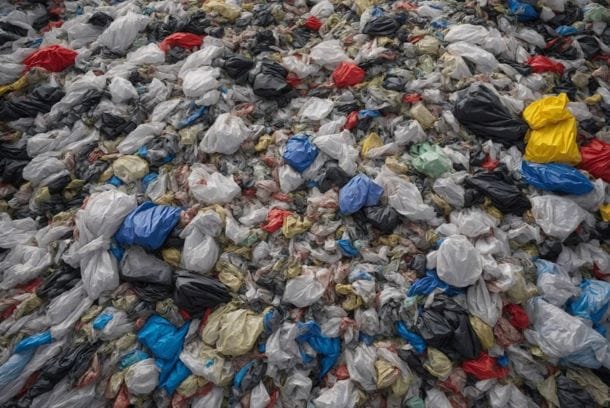Have you ever thought about what goes on after a junk removal service has taken care of all your unwanted items? Most people think that all discarded items simply get dumped at a landfill, but it’s actually a lot more complicated than that. There are various recycling centers, donation facilities, and even waste-to-energy plants that process junk, removing parts that can be reused, recycled, or disposed of. In this article, we intend to set the record straight about how your junk removal can impact the environment and where your junk goes to.

Step 1: Sorting and Processing
Once the junk has been picked up, it is taken to a central sorting hub, where different types of materials get sorted. Professional junk removal services usually sort items by determining if they can be either:
Recycled– Paper, plastic, glass, e-waste, and metal are all sent to recycling plants.
Donated– Usable appliances, clothing, and even furniture can be sent to charities.
Disposed of– Non-recyclable and hazardous materials such as waste products get sent towards landfills and incinerators.
Sorting is very important step because it is key towards ensuring that reusable materials aren’t sent to landfills.
Step 2: Recycling and Repurposing
There are a good number of materials in use today that can be recycled or reused for another purpose. Here’s how some materials go through processes:
Metals – Types of metals such as leftover aluminum and steel are melted and cleaned before they are transformed into new metal products.
Plastics – Types of plastics that exist are cut into smaller pieces then melted to be remolded into different goods that can be sold.
Paper and cardboard – They are shattered and made into pulp that is later converted into paper products.
Electronics – Old electronics such as cells phones, tablets or laptops are taken apart and then copper, gold, and lithium are separated and reused.
Using the recycling processes outlined above reduces the need for new raw materials, lowers the amount of energy used, and manages the growth of waste in landfills.
Step 3: Donations and Reuse
Not everything that people call junk has to be regarded as garbage. Furniture, clothes and appliances for example, can still be used after a single round of use. Junk removal professionals often collaborate with donation centers, shelters, and secondhand stores to sell these items that have been viewed as broken. This gives the items another chance to be used as a secondary markets. Some of the donation centers are listed below:
Habitat for Humanity – Donated construction tools and building items including furniture and appliances.
Goodwill and The Salvation Army – They accept clothing, household goods, furniture for resale and donations.
Local shelters – A number of shelters accept second hand clothing especially those that are of good quality for people that need them.
By giving away goods you no longer use, you help others in need while enhancing sustainability.
Step 4: Landfills and Waste-to-Energy Plants
Not everything can be donated or recycled. Some items are simply too broken or dangerous and end up in a landfill. Landfills nowadays are constructed with certain measures to avoid causing extensive damage to the environment. For example, modern landfills utilize some kind of liner and gas collection mechanisms to cut down on pollution. Even so, landfills produce a lot of waste, which, in turn, leads to soil and water poisoning so it remains the most unfavorable means of getting rid of garbage.
Waste that does not go to the landfill can be sent to waste-to-energy plants (WTE). There, waste materials are burned to make electricity. While a very efficient means of energy production, it does give rise to a host of environmental problems. It decreases the amount of waste in landfills and produces power, but also releases carbon compounds so it’s viewed as highly controversial.
How Can You Reduce Waste?
The steps toward waste minimization begin on the individual level, with purchase choices and methods of disposal. Here are some suggestions for ways that can help avoid damage to the environment:
Buy Less, Reuse More – Instead of buying new items, consider mending or reimagining the existing ones.
Recycle Properly – When recycling, sorting is hugely important as it determines the recycling process efficiency.
Donate Whenever Possible – Instead of discarding items, give away ones that are no longer useful to you but can be still used by others.
Composting is possible because organic waste such as food scraps and other biodegradable materials can be composted rather than disposed of.
Conclusion
Comprehending the area where your waste travels can guide you in making more environmentally considerate choices. Doing something as simple as recycling, donating, or minimizing waste, will allow you to play your part in saving the environment while reducing the amount of junk sent to landfills. The next time you get a junk removal service, consider their disposal methods and go with a company that cares about the environment.
FAQ
What items should never be thrown in the trash due to environmental concerns?
Items such as batteries, paint, lightbulbs, aerosol cans, waste oils, tires, antifreeze, electronics, medications, and mattresses should not be discarded in regular trash due to their potential to harm the environment and pose safety risks.
Why is proper junk disposal important for the environment?
Proper disposal prevents soil and water contamination, reduces air pollution from waste incineration, and alleviates landfill overcrowding. Responsible junk removal ensures hazardous materials are handled correctly, preserving ecosystems and protecting human health.

